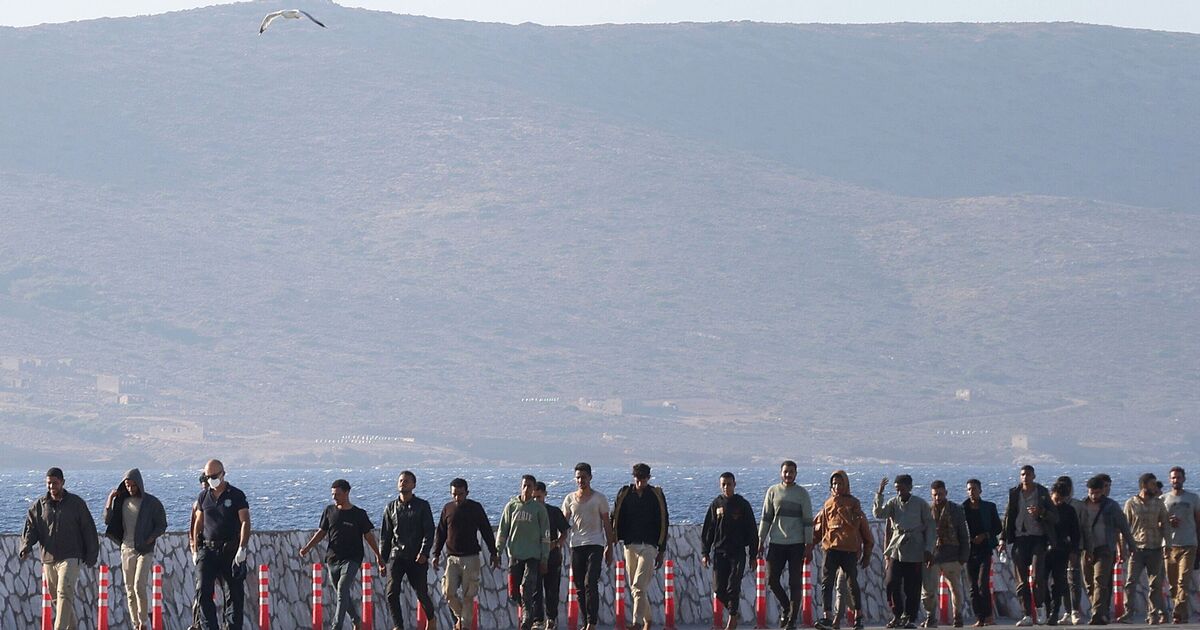Crete is experiencing a huge influx of migrants as traffickers shift to Mediterranean routes from North Africa. Crete, Greece’s biggest island and one of the most popular tourist hotspots, saw 7,000 migrants arrive between January and late June – more than three times the number in 2024.
Fears of the 2015 refugee crisis which saw 1.3 million migrants come to Europe have been awoken. From July 1 to 13, 2,619 migrants landed on Crete prompting new migration minister, Thanos Plevris, to call the worrying situation a “state of emergency” and describe it as an “invasion”. Stressing a need for strong deterrence, he issued a stark warning that “anyone who comes will be detained and returned”.
Calling himself “hardline” on immigration, he told the BBC that “it’s clear a country cannot accept such pressure from migration and not react”.
It comes after demonstrators backed by local authorities padlocked the gates of a former military base near the town of Heraklion on the Greek island of Crete symbolising locals opposition to a Greek government plan to turn the base into a camp for asylum seekers.
As a result, animosity between Greece and Libya is rising, with the route between the countries emerging as a major transit point for migrants and refugees crossing the water from North Africa.
Despite Greek authorities stepping up patrols along the eastern maritime border with Turkey the influx of migrant arrivals only seems to be rising with almost 300 arriving in Crete over the weekend.
Local officials fear the effect on the tourism industry with many scared tourists will turn their back on the holiday hotspot.
Greece had earlier announced plans to deploy navy warships near Libya’s territorial waters in a bid to curb migration into the country.
Greek Prime Minister Kyriakos Mitsotakis said the move would be done “as a precautionary measure, and always in cooperation with the Libyan authorities and the other European powers” to “send a message that smugglers will not be in charge of who enters our country”.

